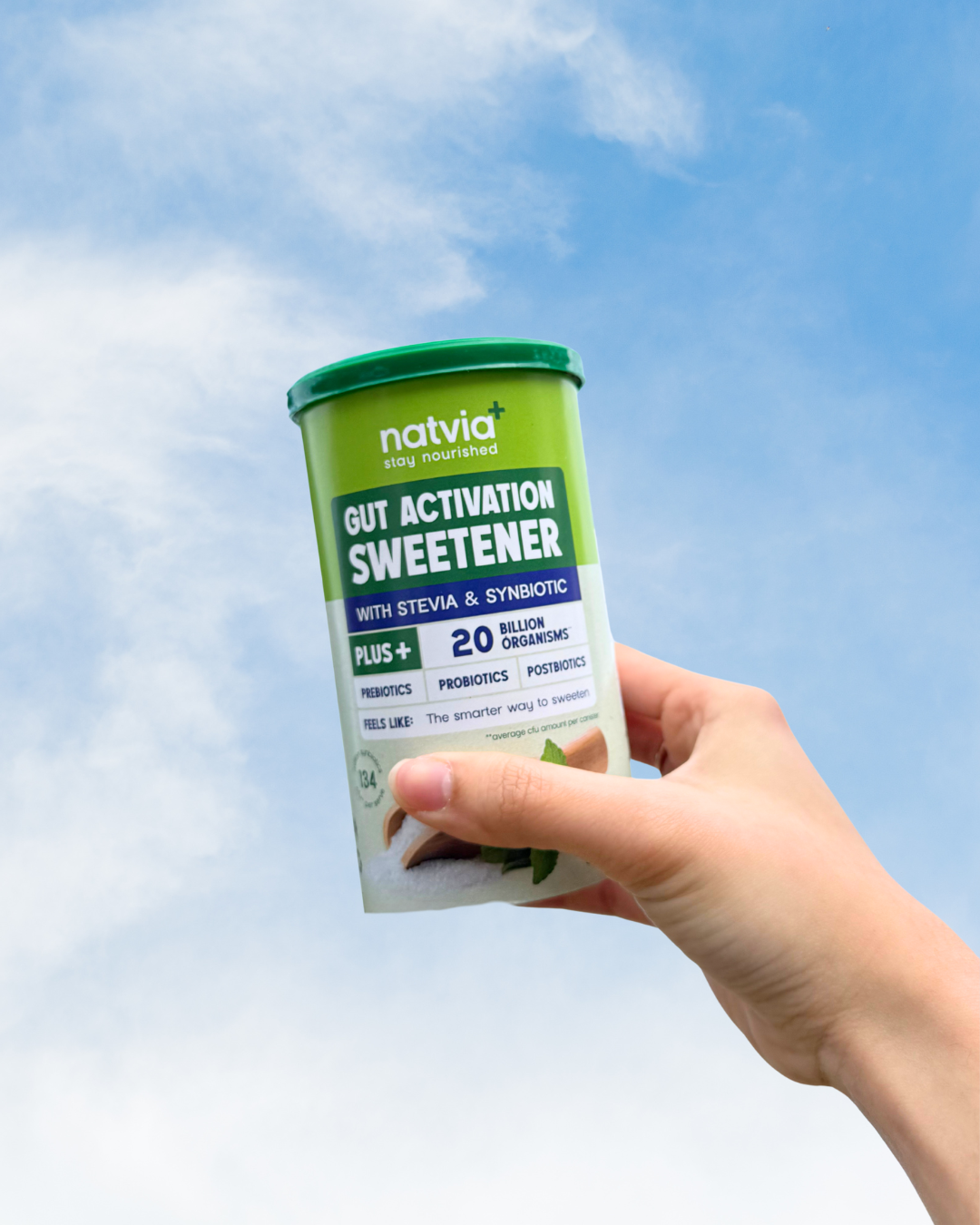Baking with natural sweeteners like Natvia is a delicious way to indulge in sweet treats—without the added sugars or extra calories. But if you’ve ever tried replacing regular sugar with a natural alternative like Natvia, you’ll know the process can be a little different.
That’s where our brand ambassador, Jelena Fairweather, steps in! With over five years of experience baking with Natvia, Jelena has perfected the art of creating healthier bakes that don’t compromise on flavour, texture, or appearance. From family-favourite cookies to light, zesty loaves, Jelena knows exactly how to make Natvia shine in every recipe.
In this exclusive interview, she shares her top tips and practical advice for baking with natural sweeteners—covering everything from getting the right sweetness, texture, and moisture to achieving that perfect rise. Whether you're a seasoned baker or just getting started with sugar alternatives, Jelena’s insights will inspire confidence in your healthier baking journey.
1. How long have you been baking with natural sweeteners like Natvia, and how has it supported your health and wellness?
Jelena: I’ve been using Natvia for five years now, and it’s become a key part of my wellness routine. I love that it allows me to enjoy sweet treats without the guilt. It satisfies those sugar cravings we all get—without compromising my health goals.
2. Which types of recipes do you find work best with Natvia or Natvia Synbiotic Sweetener? Are there any that require special attention?
Jelena: I love both products! I started my journey with Natvia 100% Natural Sweetener and have successfully adapted many of my favourite recipes with it. A couple of years ago, I was introduced to Natvia Synbiotic Sweetener, which is fantastic too—it’s packed with synbiotics and great for gut health.
As for which recipes work best, I honestly find both sweeteners perform equally well across the board—whether I’m making breakfast treats, cookies, loaves, or no-bake desserts.
3. How do Natvia measurements compare to regular sugar? Do you use more or less?
Jelena: A general rule I follow is: 1 cup of sugar equals ¾ cup of Natvia. So, you’ll usually use slightly less Natvia than sugar. I always taste the batter before baking—if it needs more sweetness, I adjust as needed. There’s nothing worse than a dessert that isn’t sweet enough!
4. What advice would you give to someone new to baking with natural sweeteners like Natvia?
Jelena: Don’t be afraid to experiment! Always taste the batter before baking and, if possible, bake a small test batch—especially for cookies or muffins. Also, keep an eye on baking times—recipes with Natvia often bake faster, so it’s important to check frequently to avoid overbaking.
5. We love your Sea Salt Double Chocolate Chip Cookies! What’s your secret to getting the perfect cookie with Natvia?
Jelena: Thank you! My family requests these all the time—they’re a hit! One thing I’ve noticed is that Natvia sweetener tends to absorb more liquid, so I don’t preheat the oven until my batter is ready. This gives me a few extra minutes to assess the consistency and add a splash of milk or a spoonful of yogurt if needed.
To achieve that perfect flaky, crispy finish, I sift baking soda and flour together—this adds extra air to the mix and helps the texture.
6. When baking cakes or loaves, how do you ensure the right rise, moisture, and texture with Natvia?
Jelena: It can be tricky at times, but here’s what works for me:
-
Use self-raising flour, and add a little extra baking powder for a better rise.
-
Sift all dry ingredients to incorporate air and improve texture.
-
For moisture, I choose oils based on the bake:
-
Vegetable oil for soft, spongy cakes—it doesn’t harden in the fridge like butter or coconut oil.
-
Butter or coconut oil for cookies—this gives a soft yet chewy texture.
-
7. Do you adjust baking temperature when using Natvia to avoid burning or undercooking?
Jelena: Yes—lower temperature is key. I usually bake at 160°C. It prevents the outside from burning while ensuring the inside cooks through evenly. This lower temp helps avoid caramelising or browning too quickly.
8. Do you ever need to change Natvia’s texture for recipes that call for icing sugar or caster sugar?
Jelena: No, I find Natvia’s fine texture works well as-is. I don’t make any adjustments for different sugar types in my recipes.
9. What challenges have you faced when baking with Natvia, and how did you overcome them?
Jelena: One challenge was achieving the right rise—extra baking powder helps with that. Another was choosing the right fat—knowing whether to use oil, butter, or coconut oil depending on the recipe makes a big difference.
For visual appeal, I sometimes use eggs with orange yolks. They give bakes like shortbread or sponge cakes a richer colour, which can be helpful since bakes made with sweeteners can sometimes look a bit pale.
10. What’s your secret to ensuring bakes still taste amazing when using a natural sweetener like Natvia?
Jelena: Bake with love—and bake when you’re in the mood! Understand that natural sweeteners offer amazing health benefits. Your treats might not taste exactly like those made with sugar, but they’ll still be delicious in their own right. Aim to get them as close as possible, and enjoy the process.
11. Can you share a favourite Natvia recipe that everyone should try?
Jelena: That’s a tough one! My Orange Frangipani Loaf Cake is a family favourite—especially with my husband, who loves anything with almonds.
👉 Orange Frangipani Loaf Cake
We also love these soft and tangy Lemon Olive Oil Madeleines!
👉 Lemon Madeleines
12. Any final tips for those looking to bake healthier treats with Natvia?
Jelena’s Top Tips:
-
Always taste test your batter. Don’t hesitate to add a little more sweetener if needed.
-
Let your batter sit for 5 minutes before baking to check moisture levels.
-
If the mix feels dry, add a splash of milk or a spoon of yogurt.
-
Bake at lower temperatures (160°C) and check frequently.
-
Choose the right fat (butter, coconut oil, or vegetable oil) for the bake you’re making.
-
And most importantly—don’t be afraid to experiment. Even the best bakers have off days!





